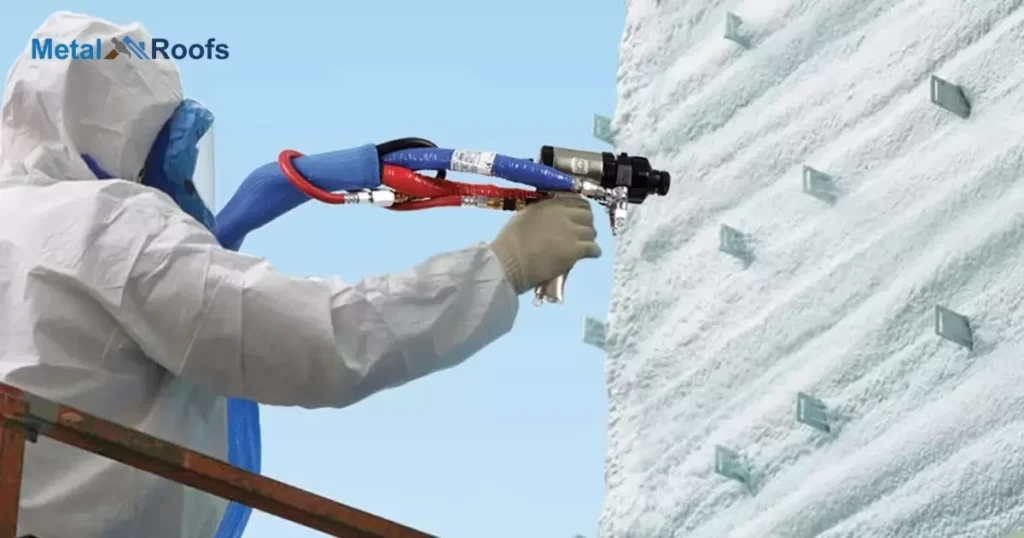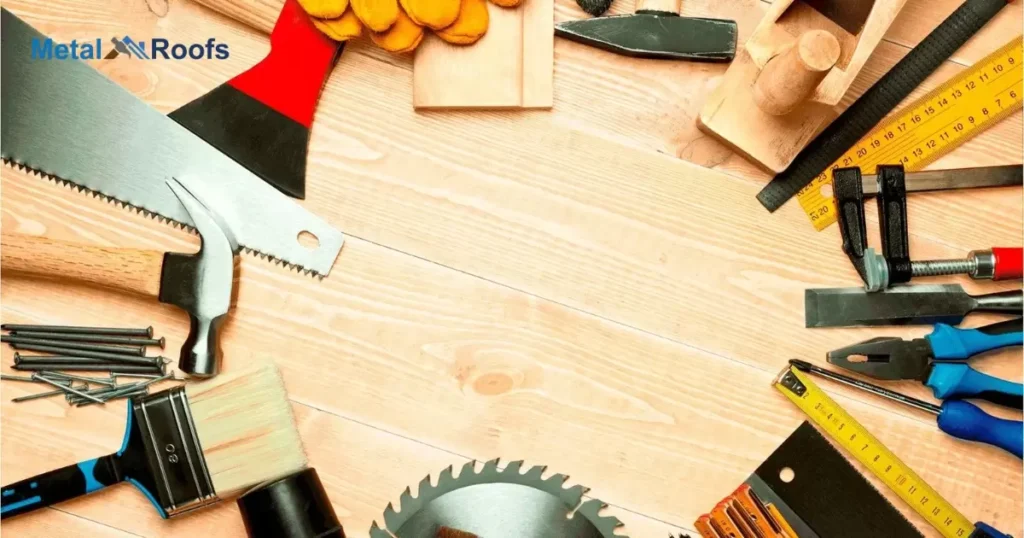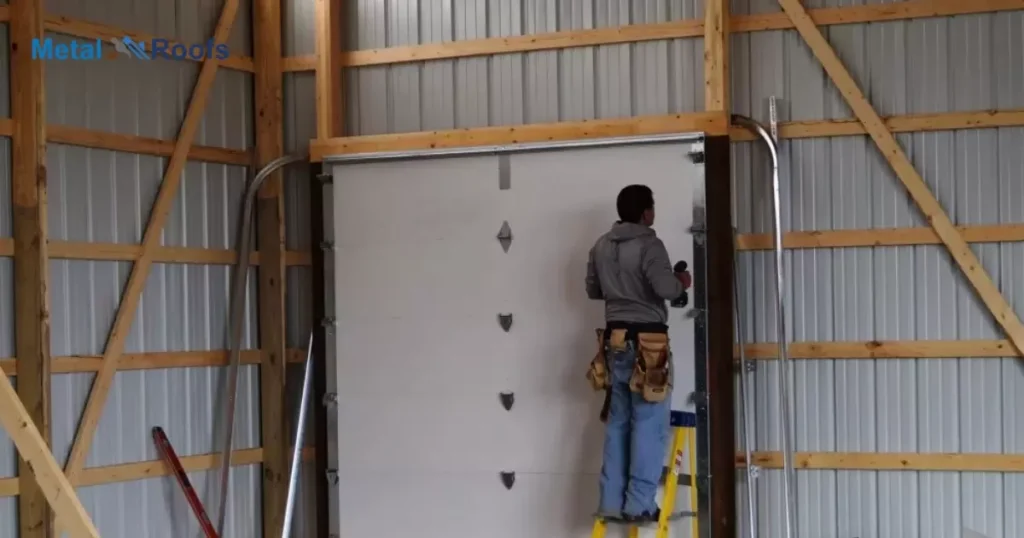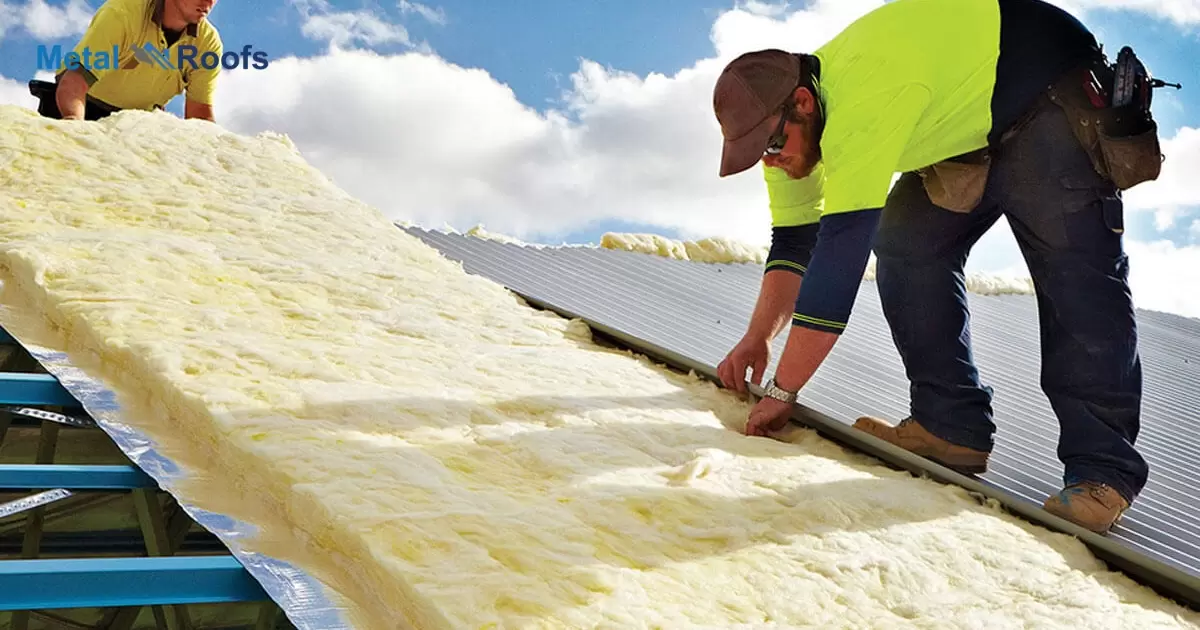Attach foam board to metal roof surface, apply adhesive meant for foam boards in strips or dabs per manufacturer directions, then press foam insulation boards onto adhesive making sure there are no gaps between boards for best insulation and moisture barrier.
Attach foam board insulation to metal roof? This guide teaches the step-by-step method to cleanly attach foam boards. Learn how to apply adhesive correctly, eliminate gaps between boards, and properly tape seams for waterproofing. Follow these key steps for superior insulation results.
Clean the metal roof thoroughly to remove debris for proper adhesive contact. Use specialized foam board adhesive in strips, pressing boards firmly to eliminate gaps and ensure a secure bond without the need for screws on the metal roof.
Key Takeaways
- Measure roof dimensions, cut foam board accordingly.
- Clean metal roof surface thoroughly.
- Use polyurethane adhesive in a zigzag pattern on the foam board.
- Press foam board onto the metal roof firmly.
- Secure with screws or nails, placing them around the edges and center.
- Consider using metal washers under screw heads to protect foam.
Importance Of Proper Insulation For Metal Roofing
| Importance of Proper Insulation for Metal Roofing |
|---|
| Energy Efficiency |
| Temperature Regulation |
| Condensation Prevention |
| Longevity of Roof |
| Cost Savings |
A well-insulated metal roof is crucial for energy efficiency. Metal conducts heat, and without proper insulation, your home can become an oven in summer and a freezer in winter. Applying foam board insulation helps regulate indoor temperatures, making your living space comfortable year-round.
Adding 1 inch foam insulation under a metal roof improves comfort, reduces energy bills, and enhances energy efficiency by preventing heat loss in winter and heat gain in summer.
What Is Foam Board Insulation For Metal Roofing?
Foam board insulation for metal roofing is a smart way to make your roof more energy-efficient. It works by adding a layer of insulation between the metal roof and your home, keeping it warmer in winter and cooler in summer. This insulation is usually made of rigid foam, easy to cut and handle.
To attach it, start by measuring and cutting the foam board to fit your roof panels. Clean the metal surface well, then apply a suitable adhesive in a zigzag pattern on the back of the foam board. Press it onto the roof and secure it with screws or nails. Don’t forget metal washers to spread the pressure.
Why Is Metal Roof Insulation Important?
Metal roof insulation matters for comfort and savings. Without it, extreme temperatures rule. Imagine an oven in summer and a freezer in winter. Insulation keeps your home cozy, blocking heat in summer and holding it tight in winter.
Energy bills drop with proper insulation. No more cranking up the AC or heating to the max. This rigid foam insulation under a metal roof acts like a barrier, preventing your indoor climate from escaping. It’s a smart investment, making your living space more pleasant and your wallet happier.
Advantages Of Using Foam Board Insulation For Metal Roofing

Foam board insulation brings notable benefits when applied to metal roofing. Firstly, it’s a champ at trapping heat, keeping your space cozy in winter and refreshingly cool during the scorching summer months. This energy efficiency translates to cost savings on heating and cooling bills.
Secondly, foam board provides a robust shield against noise, muffling the drumming rain or hail on your metal roof. It’s like giving your home a pair of noise-canceling headphones. Board insulation is lightweight, so it won’t strain your roof structure.
Discuss The Significance Of Insulation For Metal Roofing
Insulating metal roofs matters big time. First, it’s like a cozy sweater for your house. The insulation traps heat inside during the cold and blocks it out when it’s hot. This means lower energy bills all year round.
Second, insulation makes your roof tough. Metal roofs can get wildly hot or freezing cold. The cheapest way to insulate a metal building acts like a shield, buffering your home from extreme temperatures. It’s like giving your roof superhero powers. So, if you want comfort and savings, insulating that metal roof is a smart move.
Impact Of Insulation On Energy Efficiency And Cost Savings
Insulating your home packs a punch for energy efficiency and cost savings. Foam board insulation, when snugly affixed to your metal roof, acts like a thermal shield. It keeps your indoor spaces cozy by stopping heat from playing escape artist during winters and warding off unwanted warmth during summers.
This simple move helps your heating and cooling systems chill out, slashing energy bills. No more throwing money out the window, literally. Once that foam board is in place, it’s a one-time fix that keeps giving, making your wallet and the planet equally happy. So, grab that insulation, slap it on, and let the savings roll in.
How To Attach Foam Board Insulation To Metal Roofing?
Measure and cut foam board to fit your metal roof. Clean the roof surface thoroughly. Apply construction adhesive in a zigzag pattern on the foam board. Press it onto the metal roof firmly. Use screws with metal washers around the edges and center for secure fastening.
Seal joints and gaps using adhesive or foam board tape to insulate a steel building. Repeat for more layers if necessary and follow manufacturer instructions and local building codes.
Step-By-Step Guide For Attaching Foam Board Insulation To A Metal Roof
First, measure and cut the foam board to fit your metal roof. Keep it clean no dust or grease. Apply polyurethane adhesive in a zigzag pattern on the back of the board. Press it onto the roof, aligning it well.
Now, add mechanical fasteners around edges and the center using screws and metal washers. Seal any gaps with adhesive or foam board tape. Repeat for more layers if needed, staggering seams. Let it cure, following the adhesive’s instructions. Done your metal roof is now well-insulated!
Tools And Materials Required For The Installation Process

To set up the foam board insulation on your metal roof, you’ll need a few tools and materials. Get yourself foam board insulation, a reliable polyurethane construction adhesive, and a caulk gun. Don’t forget screws or nails with washers for mechanical fastening. Grab a tape measure and a utility knife for precise cuts.
Clean the metal roof’s surface thoroughly before applying the adhesive. Apply the adhesive in a zigzag pattern on the foam board’s back, press it onto the roof, and secure it with the screws or nails. To seal any gaps for a solid insulation barrier. If needed, repeat these steps for additional layers.
Pros And Cons Of Different Metal Roof Insulation Materials
Metal roof insulation has its pros and cons, depending on the materials used. Foam board insulation is a solid choice it’s lightweight, easy to install, and provides effective thermal resistance. Reflective insulation, like foil-backed materials, is cost-effective and reflects heat, but its insulating power is less in colder climates.
Fiberglass insulation is affordable and widely available, but it can absorb moisture, impacting its effectiveness over time. On the flip side, spray foam insulation excels at sealing gaps, offering superb insulation, but it tends to be more expensive.
Timbond Insulation Adhesive
When installing foam board insulation on a metal roof, using Timbond Insulation Adhesive is a smart move. This powerful adhesive works like magic, ensuring your insulation stays put for the long haul. No need for complicated procedures just measure, cut, apply the adhesive, press the foam board, and secure it with screws or nails.
Say goodbye to worries about gaps or joints this adhesive creates a solid bond that stands up to the elements. Plus, it cures fast, so your insulation is ready to roll in no time. The simple, effective solution for a snug and energy-efficient metal roof.
Rigid Foam Insulation Under Metal Roof
Attaching rigid foam insulation under a metal roof is crucial for energy efficiency. Start by cleaning the roof surface thoroughly. Apply construction adhesive on both the metal roof and the insulation. Press the insulation firmly onto the roof.
Alternatively, use screws with washers for a secure hold. Combining adhesive and screws ensures a strong bond. Consult the manufacturer’s guidelines for specific instructions. By following these steps, you can effectively insulate your metal roof and improve energy efficiency.
How To Insulate Metal Buildings?

Insulating metal buildings involves measuring and cutting foam board insulation, cleaning the metal surface, and applying adhesive in a zigzag pattern. Press the foam board onto the metal roof, secure it with screws, and use metal washers for even pressure distribution. Seal joints with adhesive or foam board tape.
Allow the adhesive to cure and repeat for additional layers if necessary, following manufacturer guidelines and local codes. Consulting a professional is advisable for extensive projects.
1 Inch Foam Insulation Under Metal Roof
Attaching 1-inch foam insulation under a metal roof is straightforward. You can use construction adhesive for a strong bond. Apply it to both the roof and the foam board. Press firmly to secure. Alternatively, use screws with washers. Pre-drill holes through the foam and into the roof.
Then, insert screws to hold the insulation in place. Always follow manufacturer guidelines for best results and consider weather conditions during installation. This ensures optimal adhesion and effectiveness of the insulation.
Frequently Asked Questions
How do you attach insulation to metal?
Measure, cut, clean metal, apply adhesive, press foam, secure with screws, seal gaps, repeat if needed. Follow guidelines, check codes, consult a pro if unsure.
Does foam insulation stick to metal?
Yes, foam insulation sticks to metal. Use polyurethane adhesive on the clean metal surface. Press the foam firmly, add screws or nails for extra hold, and you’re set. Simple, effective, and energy-efficient.
What is the best glue for foam insulation to metal?
For sticking foam insulation to metal, go for polyurethane adhesive. Apply it like zigzag, press foam on metal, use screws for extra grip. This glue works, no fuss, solid bond, good insulation.
Conclusion
Properly installing foam insulation on metal roofs has clear benefits. Correct adhesive selection promotes bonding. Careful seam sealing prevents moisture issues. No gaps between boards maximizes energy efficiency. Taking key steps ensures insulation lasts over time.
Following this foam board installation process allows for increased roof performance. Thorough cleaning enables proper adhesive contact. Precise adhesive application prevents future gaps. Firm pressure creates full adhesion without air pockets. Appropriate sealing tape makes seams waterproof.











